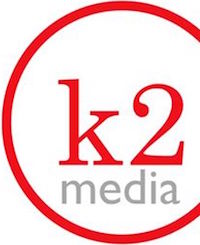You may have noticed our smiling faces in the Kansas City Business Journal the 2nd…
FDA and HIPAA: More Than Alphabet Soup for Those Using Social Media
An interesting article caught my eye today amongst the hundreds that funneled through my Google Reader. Business Week reported that the U.S. Food and Drug Administration has warned Novartis Pharmaceuticals that its use of the Facebook Share button to promote a cancer-fighting medication violates FDA requirements for disclosing information about drugs.
The FDA told Novartis that its use of Facebook Share to promote the med Tasigna is incomplete and misleading, asking the company to discontinue use of Facebook Share to promote the drug.
 As I’m sure you’ve noticed in pharmaceutical brochures and magazine ads (or in their television spots), the drug companies are required by FDA rules to include information about risks associated with taking the drug in those materials. In this case, readers could click the Facebook Share button on any page of the Tasigna website to generate a link and comment on those readers’ Facebook profiles.
As I’m sure you’ve noticed in pharmaceutical brochures and magazine ads (or in their television spots), the drug companies are required by FDA rules to include information about risks associated with taking the drug in those materials. In this case, readers could click the Facebook Share button on any page of the Tasigna website to generate a link and comment on those readers’ Facebook profiles.
The problem was that Facebook includes a brief descriptor of the linked page. And that descriptor failed to include risk information.
In the Novartis/Tasigna case, the posted shared content from the “Facebook Share” widget on the healthcare professional home page for Tasigna consisted of the following claims:
• Home – Tasigna (nilotinib) 200 mg capsules
http://www.us.tasigna.com
Tasigna (nilotinib) is used to treat a type of leukemia called Philadelphia chromosome positive chronic myeloid leukemia (Ph+ CML)
Similarly, the posted shared content from the “Facebook Share” widget on one of the consumer-directed web pages consisted of the following claims:
• Treating Your Ph+ CML with Tasigna | Tasigna (nilotinib) 200-mg capsules
www.us.tasigna.com
In addition to taking Tasigna (nilotinib) 200-mg capsules, talking to your doctor and receiving health tips can help you treat your CML.
In the FDA’s letter, it notes that the shared content contained a hyperlink to various Tasigna product websites, which do contain risk information. However, the inclusion of such a hyperlink is insufficient, according to the FDA, to mitigate the omission of risk information.
Huge wake-up call to pharmaceutical companies looking to heighten their social media engagement. And a great reminder to all of our clients and potential clients to be mindful of legal issues which might be implicated with social media use.
We are currently working with a highly-respected health care clinic here in Kansas City (more details on this project very soon!) on the creation and implementation of a social media strategy. This client has the possibility of creating a social media audience with a high level of engagement – and yet we must consider, at times, tempering that engagement where privacy requirements of HIPAA (Health Insurance Portability and Accountability Act) are triggered.
The creation of a very detailed Terms of Use document for inclusion in the client’s blog and Facebook page was both appropriate and necessary because of HIPAA’s requirements. And still, we must be vigilant in monitoring comments and wall posts, counseling the client to respond in a way that is meaningful to the community but appropriate in light of various legal and ethical restrictions.
Corporate social media proponents cannot operate in a marketing vacuum for a lot of reasons – and we’re unfortunately seeing this play out in the health care realm.
As the health care industry continues to explore social media, we will continue to read stories like the FDA/Novartis article. It underscores the importance of including personnel from across departments in social media discussions. And, despite the groans this may inspire, legal is one of those departments that must be at the table in health care.*

